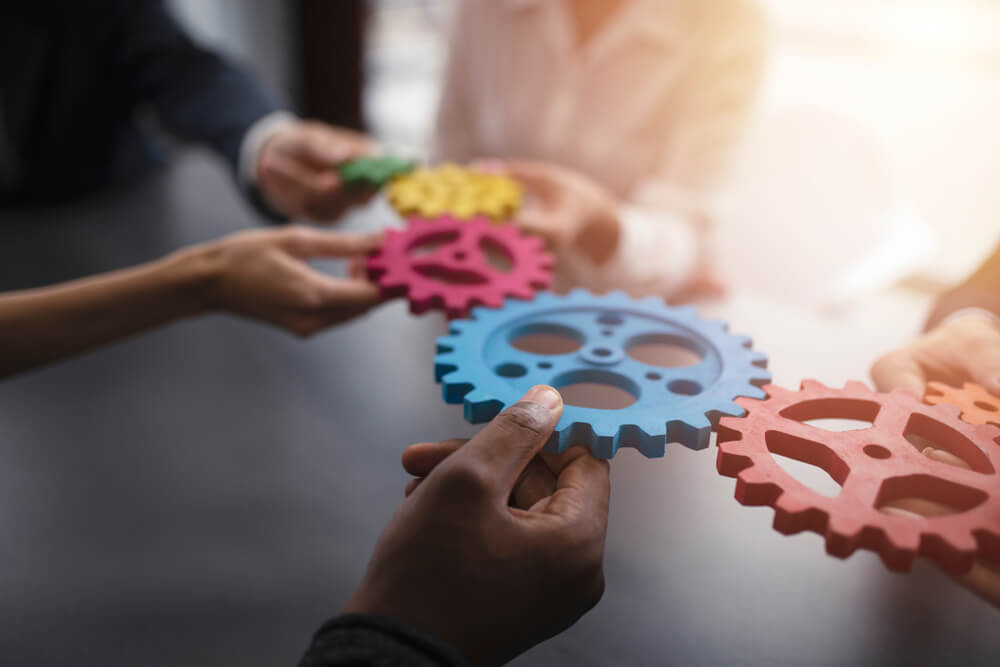Why Learning Needs to be Co-Owned by HR and Business Units When Building Organisational Capability
The complexity of the business landscape today means that the traditional custodians of workforce development—human resources—can no longer act alone. On the other hand, business function owners alone can’t enact workforce development without a greater sense of organisational purpose and focus for it. That’s why co-ownership of learning and development between HR and business units must be institutionalised in organisations.
Why institutionalise learning co-ownership between HR and business units in pursuit of building organisation capability?
It’s in the name: Organisational capability building is a team sport, with everyone pulling together to drive organisational capability maturity. But as with all things, there needs to be key players.
McKinsey offers a 9-step framework for successful L&D strategy. The first four steps follow as:
- Align with business priorities to execute strategy
- Co-ownership between HR and business units
- Assessment of capability gaps
- Design learning journeys.
Co-ownership bridges learning and business strategy alignment with accurate capability assessment. That’s a crucial bridge, since it ensures there is governance surrounding capability strategies.
Look at this way. If business needs change—say, new roles are required to match emerging cloud-based software tools—there needs to be both agility and accountability in defining, prioritising and designing new learning journeys and securing resources for them.
But it’s not just that it should be an entrenched business process. L&D should be focused on performance of realising business strategy in order to adapt to today’s disruptive working landscape. If L&D is a siloed responsibility for HR, then efforts may be counterproductive to the fast-changing and unique needs of each business unit. A co-owned learning process ensures that talent can be developed for timely value add. That creates a diverse profile for the L&D function that gives them the ability to pull levers (content creation, facilitation, design, etc.) quickly in response to changing needs.
We designed the performance learning management system (PLMS) to codify and operationalise the capabilities that are core to business success. It gives L&D and business leaders alike the ability to design truly contextual learning opportunities that link learning and performance outcomes. Employees then only learn what is relevant to their specific job role, and business leaders are empowered to support their team.
What are the challenges to institutionalising L&D co-ownership for capability?
You shake up the status quo when creating champions, because you’re adding new responsibilities to the workloads of those previously free of L&D accountability. For business unit owners, that means time lost and added work in order to help design, inform and report on learning initiatives.
Aligning HR as a business partner—there to help and support the improvement of function performance—will make change management easier to handle. However, focusing too heavily on a single organisational vision can make learning seem impersonal for employees, causing business leaders to devalue strategic training and development within their units. This is a challenge, but also will be the reward over time, quite simply because each engaged learner will realise that the training they are undertaking has a direct impact on the business and their career.
If learning is not currently recognised or rewarded in your organisation or if function owners don’t even champion learning amongst their employees, there’ll be little motivation for them to share ownership. Poor program execution that drops the ball on the KPIs business leaders actually care about (employee engagement, process and performance improvement, team effectiveness) will do little to convince them to the cause.
What is the impact of not doing this as it relates to building organisational capability?
Change doesn’t happen without widespread buy-in. And when it comes to building organisational capability, buy-in becomes paramount, with the accountability of everyone pulling in the right direction being key.
Co-ownership is also key for creating a learning culture. Without a culture of learning, stakeholders won’t understand the business benefits of training. HR and L&D also won’t have the social capital to explore the initiatives and innovations they need to, since there’s no tangible ROI felt by other functions.
In this instance, HR’s focus remains the development aspect of learning, while function owners emphasise performance. That creates a divide between what the organisation needs (improved performance of capabilities) and how it gets done (strategic development)—in direct contention with the point of creating a capability-led strategy to begin with.
The variables that affect both may be miscommunicated, misunderstood or not communicated at all between stakeholders, which will only make for ineffective or delayed learning journeys as HR works to collate the necessary workforce data from each business function. And even then, the quantitative kind of analysis needed to truly understand the job roles, performance measures and emerging capability gaps of each business function may not occur from HR’s broad perspective, further risking inaccurate data on which learning initiatives are based. From there, it’s a quick downslide to poor ROI and little to no business impacts.
Related Reads on This Topic

Why You Should Develop Tools, Methods and Standard Procedures for Building Organisational Capability
Developing the tools, methods and standard procedures helps streamline your organisational capability building process, but how do you do it…

How to Use Effective Knowledge Management Systems to Support Continuous Organisational Capability Building
Learn how knowledge management systems ensure mission-critical capabilities are readily captured, stored and made accessible…

How to Assess, Develop and Strengthen HR Capability in Your Organisation
Get the step-by-step guide on how to create human resources capabilities and implement them in your organisation…